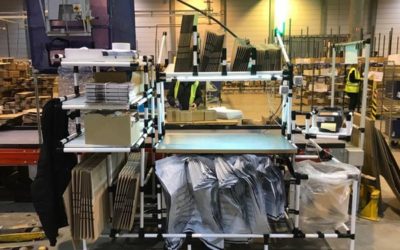Let’s ignore the fact that Six Sigma is meaningless as a statistical process measurement and control program for 99.99966% of cases. We will also ignore the murky origins of the term, which may have been based on either a typo or a misinterpretation, and the deviation from its statistical origins into the all-encompassing “system” some “trainers” are trying to sell as Six! Sigma! Courses! There is no real definition for Six Sigma, which tells us what we need to know.
For companies with immature operating systems, Six Sigma training and related projects are often used to fill the gap between where your operating system and culture are today and where they should be. The decision to insert Six Sigma into that gap instead of building out the full operating system is a short-term solution, but an understandable one. Leaders see the gap between strategy and execution, know they need something there, and reach into the “toolbox” to pull out Six Sigma, which in its current form is really just project based improvement using somewhat standardized tools. You can’t sell a training course or consulting project by saying you’re doing “project-based improvement using somewhat standardized tools” so everyone keeps calling different things by the same name of Six Sigma.
If we bring the focus back to the goal of improvement, we can take a few positive ideas from the Six Sigma approach. The benefit is that you can use these ideas along with free resources to find improvement on your own as you look at your operation.
Standardized terms and approaches across teams
Stability, standards, improvement – in that order. Stability in management and direction creates the platform for a company to progress. Stability in processes and output, where Six Sigma started, supports overall quality improvement and cost reduction. Standards are often applied to how people work or to specific details in a company, but not as often to terms and words. A benefit of a common improvement program is that people and teams from across the company speak the same “language” of what they’re looking to achieve, what process they follow, what terms they use, and how they measure their improvements. For physical improvements to processes, this helps with communication and connecting the dots to translate a solution in one area to an application in another. For example, the production team installed flow racks to control lineside inventory. The warehouse team saw how they could use that same idea in their picking area, but modified for their workspace. Modular solutions make that connection easier so that you’re not forcing out of the box equipment into the wrong application but can use the idea of the solution as a base to build upon.
Involvement of all levels from operators to management
The best problem-solving teams combine those that fully know the problem (operators) with those that can provide resources to solve problems (management). Six Sigma approaches to this vary, but have some type of role for a project sponsor. This project sponsor needs to be at a high enough level where they can get the right attention and resources to the project, but they need to be involved enough in the process to feel the need of the team and contribute their high level “why this matters” understanding. Once the framework of the approach has been set, physical changes can be tested by the operators and the rest of the team to feel out the benefits. Modular equipment provides the needed flexibility to adapt the solution in real time to see gains happen. Too many projects get stalled on paper before they ever make it to the change step. Deploy modular solutions and an attitude of “Try then improve” to support plans with action. Again, there’s no real Six Sigma standard for this, so make your own using the concept as you see it would work best for your operation.
Project-based improvement with targets
Many companies that say they’re doing lean and are proud to talk about how many kaizens they’ve done, but you get blank stares when you ask what their strategic improvement steps are for this year. Kaizen, continuous improvement at all levels, is good but it needs to be combined with step improvement from projects connected with strategic goals. Even though this is part of a true lean program, many companies have not integrated this effectively and use Six Sigma to fill the gap. It’s better than doing nothing but will result in action disconnected from results. Take the next organizational step and build all of that into your lean operating system. The integrated approach creates dynamic results when every team understands the connection between their focused projects and the ultimate goals of the organization.



